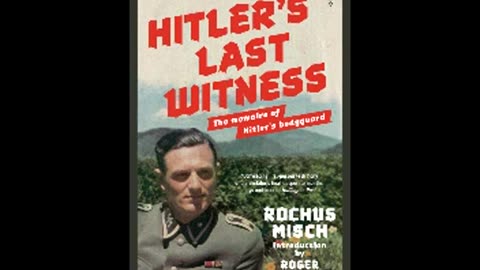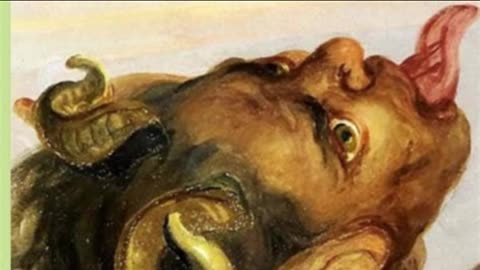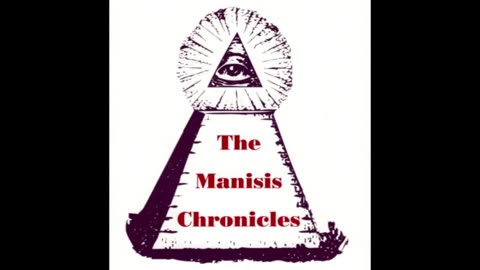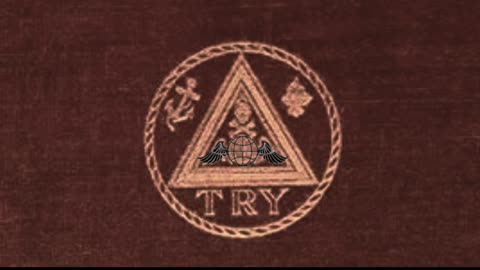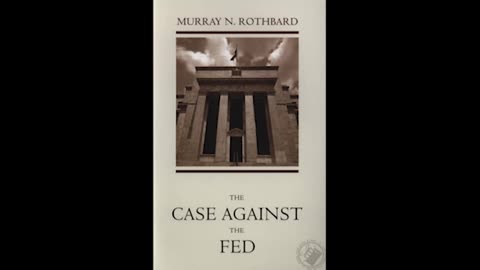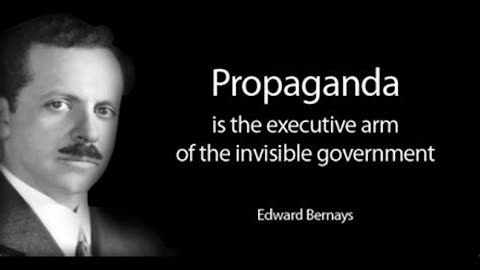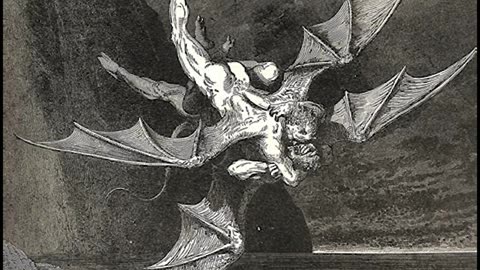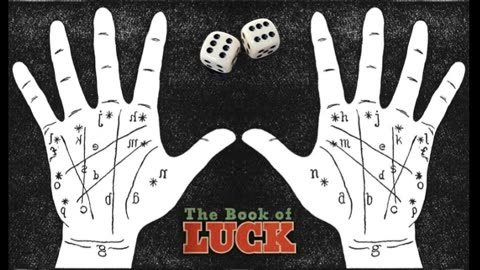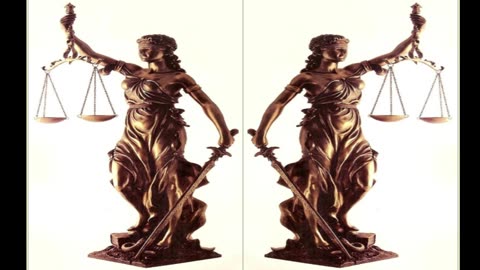
-
Courts and Criminals by: Arthur Cheney Train (1914)
 Deus Meum Que Jus"Courts and Criminals" is a collection of essays by Arthur Cheney Train, published in 1914. Drawing from his experience as a former assistant district attorney in New York, Train provides an insider's perspective on the American legal system of the early 20th century. The essays delve into various aspects of criminal law, courtroom dynamics, and societal factors influencing crime. Overview of the 12 Essays: 1. The Pleasant Fiction of the Presumption of Innocence Explores how the ideal of "innocent until proven guilty" often contrasts with the realities of the justice system, where biases and preconceived notions can influence outcomes. 2. Preparing a Criminal Case for Trial Discusses the meticulous process prosecutors undertake to build a case, from gathering evidence to strategizing courtroom presentations. 3. Sensationalism and Jury Trials Critiques the impact of media sensationalism on jury impartiality, highlighting cases where public opinion swayed judicial proceedings. 4. Why Do Men Kill? Investigates the psychological and sociological factors that lead individuals to commit homicide, challenging simplistic explanations. 5. Detectives and Others Provides insight into the world of private detectives, contrasting their methods and ethics with those of official law enforcement. 6. Detectives Who Detect Highlights cases where detectives showcased exceptional skill and intuition, emphasizing the art of investigation. 7. Women in the Courts Examines the unique challenges women face in the legal system, both as defendants and plaintiffs, and the evolving perceptions of their credibility and roles. 8. Tricks of the Trade Reveals various tactics employed by lawyers to sway juries and judges, shedding light on ethical gray areas in legal practice. 9. What Fosters Crime Analyzes societal conditions that contribute to criminal behavior, such as poverty, lack of education, and systemic injustices. 10. Insanity and the Law Delves into the complexities of the insanity defense, discussing its legal implications and the challenges of distinguishing between mental illness and criminal intent. 11. The Mala Vita in America Explores the presence and influence of organized crime syndicates, particularly those with roots in Italian immigrant communities, and their impact on American society. 12. The Prisoner at the Bar Reflects on the experiences of defendants in the courtroom, the dynamics between lawyers and clients, and the human elements that influence justice. Train's essays offer a critical and nuanced examination of the legal system, many of which remain relevant in discussions about justice and criminal law today. About the Author: Arthur Cheney Train was an American lawyer, author, and former assistant district attorney in New York City. Best known for his legal fiction and courtroom writings, Train brought sharp insight and dry wit to his portrayals of the American justice system. His professional background gave him rare access to the inner workings of criminal courts during the early 20th century, and he used that experience to craft both fiction and nonfiction that highlighted the system's strengths—and exposed its flaws. He gained widespread recognition for creating the fictional character **Mr. Ephraim Tutt**, a clever, principled defense attorney who often challenged legal corruption and injustice. However, in *Courts and Criminals* (1914), Train stepped out from behind his fictional veil and delivered a candid, unvarnished look at real criminal proceedings, systemic issues, legal loopholes, and human nature as seen from the prosecutor’s side of the courtroom. With a sharp eye for hypocrisy and a deep concern for justice, Train's work continues to resonate with readers interested in law, ethics, and the complexities of human behavior under pressure. His legacy is that of a legal mind who could entertain as easily as he could educate.225 views
Deus Meum Que Jus"Courts and Criminals" is a collection of essays by Arthur Cheney Train, published in 1914. Drawing from his experience as a former assistant district attorney in New York, Train provides an insider's perspective on the American legal system of the early 20th century. The essays delve into various aspects of criminal law, courtroom dynamics, and societal factors influencing crime. Overview of the 12 Essays: 1. The Pleasant Fiction of the Presumption of Innocence Explores how the ideal of "innocent until proven guilty" often contrasts with the realities of the justice system, where biases and preconceived notions can influence outcomes. 2. Preparing a Criminal Case for Trial Discusses the meticulous process prosecutors undertake to build a case, from gathering evidence to strategizing courtroom presentations. 3. Sensationalism and Jury Trials Critiques the impact of media sensationalism on jury impartiality, highlighting cases where public opinion swayed judicial proceedings. 4. Why Do Men Kill? Investigates the psychological and sociological factors that lead individuals to commit homicide, challenging simplistic explanations. 5. Detectives and Others Provides insight into the world of private detectives, contrasting their methods and ethics with those of official law enforcement. 6. Detectives Who Detect Highlights cases where detectives showcased exceptional skill and intuition, emphasizing the art of investigation. 7. Women in the Courts Examines the unique challenges women face in the legal system, both as defendants and plaintiffs, and the evolving perceptions of their credibility and roles. 8. Tricks of the Trade Reveals various tactics employed by lawyers to sway juries and judges, shedding light on ethical gray areas in legal practice. 9. What Fosters Crime Analyzes societal conditions that contribute to criminal behavior, such as poverty, lack of education, and systemic injustices. 10. Insanity and the Law Delves into the complexities of the insanity defense, discussing its legal implications and the challenges of distinguishing between mental illness and criminal intent. 11. The Mala Vita in America Explores the presence and influence of organized crime syndicates, particularly those with roots in Italian immigrant communities, and their impact on American society. 12. The Prisoner at the Bar Reflects on the experiences of defendants in the courtroom, the dynamics between lawyers and clients, and the human elements that influence justice. Train's essays offer a critical and nuanced examination of the legal system, many of which remain relevant in discussions about justice and criminal law today. About the Author: Arthur Cheney Train was an American lawyer, author, and former assistant district attorney in New York City. Best known for his legal fiction and courtroom writings, Train brought sharp insight and dry wit to his portrayals of the American justice system. His professional background gave him rare access to the inner workings of criminal courts during the early 20th century, and he used that experience to craft both fiction and nonfiction that highlighted the system's strengths—and exposed its flaws. He gained widespread recognition for creating the fictional character **Mr. Ephraim Tutt**, a clever, principled defense attorney who often challenged legal corruption and injustice. However, in *Courts and Criminals* (1914), Train stepped out from behind his fictional veil and delivered a candid, unvarnished look at real criminal proceedings, systemic issues, legal loopholes, and human nature as seen from the prosecutor’s side of the courtroom. With a sharp eye for hypocrisy and a deep concern for justice, Train's work continues to resonate with readers interested in law, ethics, and the complexities of human behavior under pressure. His legacy is that of a legal mind who could entertain as easily as he could educate.225 views -
Hitler's Last Witness: The Memoirs of Hitler's Bodyguard by Rochus Misch (2008)
 Deus Meum Que JusHitler's Last Witness: The Memoirs of Hitler's Bodyguard by Rochus Misch is a firsthand account from the man who served as Adolf Hitler’s personal bodyguard, courier, and telephonist from 1940 until the Führer's death in 1945. As one of the last surviving members of Hitler’s inner circle, Misch offers a rare, unfiltered glimpse into daily life inside the Reich Chancellery and the Führerbunker. The memoir covers his early years, wartime service, and how he came to work directly for Hitler. Misch recounts mundane routines, intense moments during Allied bombings, and the final days of the Third Reich, including his experience during Hitler and Eva Braun's suicides. Rather than offering political analysis, the book reflects Misch’s perspective as a loyal soldier caught in history’s darkest chapter, often detached from or unwilling to confront the regime’s atrocities. Blunt, human, and often unsettling, Hitler's Last Witness provides a unique - and controversial - perspective on one of history’s most notorious regimes from a man who watched it collapse from the inside. About the Author: Rochus Misch (1917–2013) was a member of the SS and served as Adolf Hitler’s personal bodyguard, courier, and telephonist from 1940 until the fall of the Third Reich in 1945. Born in Silesia (then part of Germany), Misch joined the Leibstandarte SS Adolf Hitler, Hitler’s elite bodyguard unit, and was eventually assigned to Hitler’s personal staff. He was present for many pivotal events of the war, including the final days inside the Führerbunker, witnessing firsthand the collapse of Nazi Germany. Misch was captured by the Soviets in 1945 and spent nine years in a Soviet prison camp before returning to Germany. Until his death in 2013, Misch remained one of the last surviving individuals from Hitler’s inner circle. His memoir, Hitler’s Last Witness, reflects his experiences not as a policymaker or ideologue, but as a man who observed history unfold from within the Nazi regime—often loyal, occasionally naive, and unapologetically blunt. His account is both a rare historical document and a controversial reminder of the human faces behind one of history’s darkest chapters.248 views
Deus Meum Que JusHitler's Last Witness: The Memoirs of Hitler's Bodyguard by Rochus Misch is a firsthand account from the man who served as Adolf Hitler’s personal bodyguard, courier, and telephonist from 1940 until the Führer's death in 1945. As one of the last surviving members of Hitler’s inner circle, Misch offers a rare, unfiltered glimpse into daily life inside the Reich Chancellery and the Führerbunker. The memoir covers his early years, wartime service, and how he came to work directly for Hitler. Misch recounts mundane routines, intense moments during Allied bombings, and the final days of the Third Reich, including his experience during Hitler and Eva Braun's suicides. Rather than offering political analysis, the book reflects Misch’s perspective as a loyal soldier caught in history’s darkest chapter, often detached from or unwilling to confront the regime’s atrocities. Blunt, human, and often unsettling, Hitler's Last Witness provides a unique - and controversial - perspective on one of history’s most notorious regimes from a man who watched it collapse from the inside. About the Author: Rochus Misch (1917–2013) was a member of the SS and served as Adolf Hitler’s personal bodyguard, courier, and telephonist from 1940 until the fall of the Third Reich in 1945. Born in Silesia (then part of Germany), Misch joined the Leibstandarte SS Adolf Hitler, Hitler’s elite bodyguard unit, and was eventually assigned to Hitler’s personal staff. He was present for many pivotal events of the war, including the final days inside the Führerbunker, witnessing firsthand the collapse of Nazi Germany. Misch was captured by the Soviets in 1945 and spent nine years in a Soviet prison camp before returning to Germany. Until his death in 2013, Misch remained one of the last surviving individuals from Hitler’s inner circle. His memoir, Hitler’s Last Witness, reflects his experiences not as a policymaker or ideologue, but as a man who observed history unfold from within the Nazi regime—often loyal, occasionally naive, and unapologetically blunt. His account is both a rare historical document and a controversial reminder of the human faces behind one of history’s darkest chapters.248 views -
The Anti-Christ by Friedrich Nietzsche
 Deus Meum Que JusThis book is a blistering critique of Christianity, morality, and the values of Western civilization. Written in 1888 but published posthumously in 1895, the book attacks the foundations of Christian doctrine, arguing that it promotes weakness, resentment, and a denial of life. Nietzsche contrasts Christian values with what he calls the "will to power", advocating for a philosophy that embraces strength, self-overcoming, and life-affirmation. Throughout the work, Nietzsche condemns priests, theologians, and the Church, portraying them as corrupt forces that have twisted human nature by exalting suffering, meekness, and submission. He sees Jesus as a noble figure whose teachings were later distorted by Paul and the Church to create an oppressive moral system. More than just an attack on religion, The Anti-Christ is a call for a revaluation of values, where humanity breaks free from what Nietzsche sees as the self-destructive chains of Christianity and embraces a bold, vitalistic approach to existence. Provocative and uncompromising, the book remains one of Nietzsche’s most controversial and powerful works. About the Author: Friedrich Nietzsche (1844–1900) was a German philosopher, cultural critic, and philologist known for his radical critiques of religion, morality, and modern society. Originally trained in classical philology, Nietzsche became a professor at the University of Basel at just 24 years old before leaving academia due to health issues. His philosophical writings challenge traditional values and introduce concepts such as the Übermensch (Overman), the Will to Power, and the Eternal Recurrence, which later influenced existentialism, nihilism, and postmodern thought. Nietzsche was a fierce critic of Christianity, democracy, and herd morality, viewing them as obstacles to human greatness. His works, including Thus Spoke Zarathustra, Beyond Good and Evil, and The Anti-Christ, called for a revaluation of all values and a rejection of life-denying ideologies. Despite his profound impact, Nietzsche spent the final years of his life in mental and physical decline, with his sister, Elisabeth Förster-Nietzsche, later manipulating and misrepresenting his works for nationalist and Judenfeindlichkeit causes—distorting his philosophy beyond recognition. Though controversial in his time, Nietzsche’s influence has only grown, shaping modern philosophy, psychology, and literature. His ideas remain as provocative and challenging today as when he first wrote them.391 views
Deus Meum Que JusThis book is a blistering critique of Christianity, morality, and the values of Western civilization. Written in 1888 but published posthumously in 1895, the book attacks the foundations of Christian doctrine, arguing that it promotes weakness, resentment, and a denial of life. Nietzsche contrasts Christian values with what he calls the "will to power", advocating for a philosophy that embraces strength, self-overcoming, and life-affirmation. Throughout the work, Nietzsche condemns priests, theologians, and the Church, portraying them as corrupt forces that have twisted human nature by exalting suffering, meekness, and submission. He sees Jesus as a noble figure whose teachings were later distorted by Paul and the Church to create an oppressive moral system. More than just an attack on religion, The Anti-Christ is a call for a revaluation of values, where humanity breaks free from what Nietzsche sees as the self-destructive chains of Christianity and embraces a bold, vitalistic approach to existence. Provocative and uncompromising, the book remains one of Nietzsche’s most controversial and powerful works. About the Author: Friedrich Nietzsche (1844–1900) was a German philosopher, cultural critic, and philologist known for his radical critiques of religion, morality, and modern society. Originally trained in classical philology, Nietzsche became a professor at the University of Basel at just 24 years old before leaving academia due to health issues. His philosophical writings challenge traditional values and introduce concepts such as the Übermensch (Overman), the Will to Power, and the Eternal Recurrence, which later influenced existentialism, nihilism, and postmodern thought. Nietzsche was a fierce critic of Christianity, democracy, and herd morality, viewing them as obstacles to human greatness. His works, including Thus Spoke Zarathustra, Beyond Good and Evil, and The Anti-Christ, called for a revaluation of all values and a rejection of life-denying ideologies. Despite his profound impact, Nietzsche spent the final years of his life in mental and physical decline, with his sister, Elisabeth Förster-Nietzsche, later manipulating and misrepresenting his works for nationalist and Judenfeindlichkeit causes—distorting his philosophy beyond recognition. Though controversial in his time, Nietzsche’s influence has only grown, shaping modern philosophy, psychology, and literature. His ideas remain as provocative and challenging today as when he first wrote them.391 views -
The Manisis Chronicles: A Novel of Fantasy or Prophecy? by Dr. Eugene J. Bruington
 Deus Meum Que JusThis book is a thought-provoking narrative that blurs the lines between fiction and foresight. The book warns of trials and tribulations that may soon face the United States, exploring the fundamental laws governing human existence and offering guidance on how global populations might become the "wheat" in the anticipated Great Separation. Through a mix of storytelling and deep philosophical insight, the author challenges readers to discern between imaginative fiction and potential reality, prompting reflection on the actions necessary to navigate the uncertain future ahead. About the Author: Dr. Eugene J. Bruington is the pseudonymous author of The Manisis Chronicles: A Novel of Fantasy or Prophecy? Little is publicly known about the true identity of the writer. Whether a scholar of metaphysics, a mystic, or simply an observer of global events, the author presents a work that blends allegory, prophecy, and philosophy - challenging readers to question the nature of reality, spiritual law, and the future of humanity.608 views 1 comment
Deus Meum Que JusThis book is a thought-provoking narrative that blurs the lines between fiction and foresight. The book warns of trials and tribulations that may soon face the United States, exploring the fundamental laws governing human existence and offering guidance on how global populations might become the "wheat" in the anticipated Great Separation. Through a mix of storytelling and deep philosophical insight, the author challenges readers to discern between imaginative fiction and potential reality, prompting reflection on the actions necessary to navigate the uncertain future ahead. About the Author: Dr. Eugene J. Bruington is the pseudonymous author of The Manisis Chronicles: A Novel of Fantasy or Prophecy? Little is publicly known about the true identity of the writer. Whether a scholar of metaphysics, a mystic, or simply an observer of global events, the author presents a work that blends allegory, prophecy, and philosophy - challenging readers to question the nature of reality, spiritual law, and the future of humanity.608 views 1 comment -
Compendium of Occult Laws by: Dr. R. Swinburne Clymer
 Deus Meum Que JusHere, perhaps for the first time, a single volume presents practically all of the Laws that govern man and nature - including Hermetic and esoteric concepts and teachings, and the philosophy of Initiation. These are Laws that lead mankind to Life, Light and Love and to Immortality.522 views
Deus Meum Que JusHere, perhaps for the first time, a single volume presents practically all of the Laws that govern man and nature - including Hermetic and esoteric concepts and teachings, and the philosophy of Initiation. These are Laws that lead mankind to Life, Light and Love and to Immortality.522 views -
The Case Against the Fed by: Murray N. Rothbard
 Deus Meum Que JusThe Case Against the Fed is a scathing indictment of the Federal Reserve System, arguing that it operates as a banking cartel that enriches financial elites at the public’s expense. Murray N. Rothbard meticulously traces the history of money and banking, exposing how the Fed manipulates the money supply, fuels inflation, and enables reckless government expansion through deficit spending. With clear, incisive analysis, he dissects the mechanics of fractional reserve banking and central banking, illustrating how they create economic instability rather than preventing it. Rothbard makes a compelling case that the Federal Reserve is not just unnecessary but actively harmful to a free-market economy, advocating instead for sound money free from government control. About the Author: Murray N. Rothbard (1926–1995) was an American economist, historian, and political theorist, widely regarded as one of the most influential figures in Austrian economics and modern libertarian thought. A student of Ludwig von Mises, Rothbard was a leading advocate for free markets and a relentless critic of central banking, state intervention, and coercive power structures. As a co-founder of the Cato Institute and the Ludwig von Mises Institute, he played a key role in shaping the libertarian movement. His seminal works, including Man, Economy, and State, The Mystery of Banking, and For a New Liberty, challenge the legitimacy of government-controlled monetary systems and promote a society based on voluntary exchange and private property. His unwavering opposition to the Federal Reserve and fiat currency, as exemplified in The Case Against the Fed, continues to influence libertarians, Austrian economists, and critics of centralized financial power to this day.355 views
Deus Meum Que JusThe Case Against the Fed is a scathing indictment of the Federal Reserve System, arguing that it operates as a banking cartel that enriches financial elites at the public’s expense. Murray N. Rothbard meticulously traces the history of money and banking, exposing how the Fed manipulates the money supply, fuels inflation, and enables reckless government expansion through deficit spending. With clear, incisive analysis, he dissects the mechanics of fractional reserve banking and central banking, illustrating how they create economic instability rather than preventing it. Rothbard makes a compelling case that the Federal Reserve is not just unnecessary but actively harmful to a free-market economy, advocating instead for sound money free from government control. About the Author: Murray N. Rothbard (1926–1995) was an American economist, historian, and political theorist, widely regarded as one of the most influential figures in Austrian economics and modern libertarian thought. A student of Ludwig von Mises, Rothbard was a leading advocate for free markets and a relentless critic of central banking, state intervention, and coercive power structures. As a co-founder of the Cato Institute and the Ludwig von Mises Institute, he played a key role in shaping the libertarian movement. His seminal works, including Man, Economy, and State, The Mystery of Banking, and For a New Liberty, challenge the legitimacy of government-controlled monetary systems and promote a society based on voluntary exchange and private property. His unwavering opposition to the Federal Reserve and fiat currency, as exemplified in The Case Against the Fed, continues to influence libertarians, Austrian economists, and critics of centralized financial power to this day.355 views -
"Propaganda" by: Edward Bernays (1928)
 Deus Meum Que JusPropaganda is a foundational work on mass influence and psychological manipulation, written by Edward Bernays, the father of modern public relations. Published in 1928, the book outlines how governments, corporations, and media shape public opinion through strategic messaging, emotional appeal, and subconscious influence techniques. Bernays argues that the masses are not rational thinkers, but rather easily guided by those who understand the mechanics of persuasion. He details how propaganda can be used not just in politics, but in advertising, business, and social movements to mold society’s beliefs and behaviors. His ideas - rooted in Freudian psychology and wartime propaganda strategies - laid the groundwork for modern marketing, political campaigns, and media control. More than just a historical text, Propaganda remains a playbook for those in power, showing how perception can be manufactured, trends can be created, and people can be led to believe they made independent choices when, in reality, they were carefully guided toward them. Whether you see it as a warning or a manual, it’s essential reading for understanding the invisible forces shaping public thought. About the Author: Edward Bernays (1891–1995) was a pioneer in public relations, mass persuasion, and psychological manipulation, often called the "Father of Public Relations." A nephew of Sigmund Freud, he applied Freudian psychology to marketing and propaganda, shaping the way governments, corporations, and media influence public opinion. Born in Vienna, Austria, and later moving to the United States, Bernays worked on wartime propaganda for the U.S. government during World War I, helping to promote America’s role in the war effort. After seeing how effective propaganda was, he realized it could be weaponized in peacetime, using subtle psychological tactics to control public perception. Bernays pioneered modern advertising and PR techniques, orchestrating campaigns that made bacon and eggs a "traditional American breakfast", convinced women to smoke Lucky Strikes by branding cigarettes as symbols of female empowerment, and introduced the concept of "press events" to generate artificial demand for products. His ideas also influenced politicians, intelligence agencies, and corporate elites, many of whom used his strategies to shape public behavior without people realizing they were being manipulated. His book Propaganda (1928) remains one of the most influential works on mass persuasion, laying the foundation for modern political campaigns, corporate branding, and media control. Whether seen as a genius or a manipulator, Bernays reshaped the modern world - often behind the scenes - by teaching those in power how to engineer consent.346 views 2 comments
Deus Meum Que JusPropaganda is a foundational work on mass influence and psychological manipulation, written by Edward Bernays, the father of modern public relations. Published in 1928, the book outlines how governments, corporations, and media shape public opinion through strategic messaging, emotional appeal, and subconscious influence techniques. Bernays argues that the masses are not rational thinkers, but rather easily guided by those who understand the mechanics of persuasion. He details how propaganda can be used not just in politics, but in advertising, business, and social movements to mold society’s beliefs and behaviors. His ideas - rooted in Freudian psychology and wartime propaganda strategies - laid the groundwork for modern marketing, political campaigns, and media control. More than just a historical text, Propaganda remains a playbook for those in power, showing how perception can be manufactured, trends can be created, and people can be led to believe they made independent choices when, in reality, they were carefully guided toward them. Whether you see it as a warning or a manual, it’s essential reading for understanding the invisible forces shaping public thought. About the Author: Edward Bernays (1891–1995) was a pioneer in public relations, mass persuasion, and psychological manipulation, often called the "Father of Public Relations." A nephew of Sigmund Freud, he applied Freudian psychology to marketing and propaganda, shaping the way governments, corporations, and media influence public opinion. Born in Vienna, Austria, and later moving to the United States, Bernays worked on wartime propaganda for the U.S. government during World War I, helping to promote America’s role in the war effort. After seeing how effective propaganda was, he realized it could be weaponized in peacetime, using subtle psychological tactics to control public perception. Bernays pioneered modern advertising and PR techniques, orchestrating campaigns that made bacon and eggs a "traditional American breakfast", convinced women to smoke Lucky Strikes by branding cigarettes as symbols of female empowerment, and introduced the concept of "press events" to generate artificial demand for products. His ideas also influenced politicians, intelligence agencies, and corporate elites, many of whom used his strategies to shape public behavior without people realizing they were being manipulated. His book Propaganda (1928) remains one of the most influential works on mass persuasion, laying the foundation for modern political campaigns, corporate branding, and media control. Whether seen as a genius or a manipulator, Bernays reshaped the modern world - often behind the scenes - by teaching those in power how to engineer consent.346 views 2 comments -
Psychological Warfare by: Paul Linebarger
 Deus Meum Que JusPsychological Warfare is a foundational manual on propaganda, influence operations, and psychological manipulation in warfare, written by Paul M.A. Linebarger, a U.S. military intelligence officer and expert in psychological operations (PSYOP). Originally published in 1948 and later revised in 1954, this book provides an in-depth analysis of how governments, military forces, and intelligence agencies use psychological tactics to control narratives, shape public perception, and destabilize enemies. Linebarger explores historical examples of psychological warfare, from ancient times to World War II and the early Cold War, detailing how propaganda was used to weaken morale, spread misinformation, and influence both enemy and civilian populations. He outlines techniques for effective psychological operations, including black, white, and gray propaganda, radio broadcasts, leaflet campaigns, and rumor control. More than just a military manual, Psychological Warfare serves as a blueprint for understanding modern information warfare, psychological operations, and propaganda techniques that continue to be used today. Due to its real-world applications and unfiltered insights, it remains one of the most important works ever written on the subject - highly relevant to anyone studying military strategy, intelligence operations, media influence, or political warfare. About the Author: Paul Myron Anthony Linebarger was a military intelligence officer, political scientist, and expert in psychological warfare, best known for his work in U.S. military strategy and propaganda operations during World War II and the Cold War. He was also a renowned science fiction writer under the pen name Cordwainer Smith. Born in Milwaukee, Wisconsin, Linebarger was raised in an elite diplomatic environment, as his father was an advisor to Sun Yat-sen, the first president of the Republic of China. This upbringing gave him early exposure to global politics, intelligence work, and military strategy. Fluent in multiple languages, including Chinese and Russian, he later became a professor of Asian Studies at Johns Hopkins University and an adviser to the U.S. Department of Defense. During World War II, Linebarger served in U.S. Army Intelligence and the Office of War Information (OWI), where he helped develop psychological operations (PSYOP), including radio broadcasts, propaganda leaflets, and strategic deception tactics. His expertise made him one of the leading architects of modern psychological warfare. After the war, Linebarger continued to shape U.S. intelligence strategy, advising covert operations, counterinsurgency efforts, and Cold War propaganda campaigns. His book Psychological Warfare (1948, revised 1954) became the definitive guide on the subject, widely used by militaries, intelligence agencies, and political strategists. Beyond his intelligence work, Linebarger is celebrated in science fiction circles for his unique and visionary writing, particularly his Instrumentality of Mankind series, published under the name Cordwainer Smith. His fiction often contained themes of control, perception, and hidden power structures - ideas deeply rooted in his real-world expertise in psychological warfare.280 views
Deus Meum Que JusPsychological Warfare is a foundational manual on propaganda, influence operations, and psychological manipulation in warfare, written by Paul M.A. Linebarger, a U.S. military intelligence officer and expert in psychological operations (PSYOP). Originally published in 1948 and later revised in 1954, this book provides an in-depth analysis of how governments, military forces, and intelligence agencies use psychological tactics to control narratives, shape public perception, and destabilize enemies. Linebarger explores historical examples of psychological warfare, from ancient times to World War II and the early Cold War, detailing how propaganda was used to weaken morale, spread misinformation, and influence both enemy and civilian populations. He outlines techniques for effective psychological operations, including black, white, and gray propaganda, radio broadcasts, leaflet campaigns, and rumor control. More than just a military manual, Psychological Warfare serves as a blueprint for understanding modern information warfare, psychological operations, and propaganda techniques that continue to be used today. Due to its real-world applications and unfiltered insights, it remains one of the most important works ever written on the subject - highly relevant to anyone studying military strategy, intelligence operations, media influence, or political warfare. About the Author: Paul Myron Anthony Linebarger was a military intelligence officer, political scientist, and expert in psychological warfare, best known for his work in U.S. military strategy and propaganda operations during World War II and the Cold War. He was also a renowned science fiction writer under the pen name Cordwainer Smith. Born in Milwaukee, Wisconsin, Linebarger was raised in an elite diplomatic environment, as his father was an advisor to Sun Yat-sen, the first president of the Republic of China. This upbringing gave him early exposure to global politics, intelligence work, and military strategy. Fluent in multiple languages, including Chinese and Russian, he later became a professor of Asian Studies at Johns Hopkins University and an adviser to the U.S. Department of Defense. During World War II, Linebarger served in U.S. Army Intelligence and the Office of War Information (OWI), where he helped develop psychological operations (PSYOP), including radio broadcasts, propaganda leaflets, and strategic deception tactics. His expertise made him one of the leading architects of modern psychological warfare. After the war, Linebarger continued to shape U.S. intelligence strategy, advising covert operations, counterinsurgency efforts, and Cold War propaganda campaigns. His book Psychological Warfare (1948, revised 1954) became the definitive guide on the subject, widely used by militaries, intelligence agencies, and political strategists. Beyond his intelligence work, Linebarger is celebrated in science fiction circles for his unique and visionary writing, particularly his Instrumentality of Mankind series, published under the name Cordwainer Smith. His fiction often contained themes of control, perception, and hidden power structures - ideas deeply rooted in his real-world expertise in psychological warfare.280 views -
Dante's Inferno (Modern English Translation)
 Deus Meum Que JusHell, as a place of eternal fire and torment, was never actually described in the Bible... at least, not the way most people think. If you didn’t know, the modern version of Satan with the red skin, horns, a pitchfork, and ruling over hell - didn’t come from the Bible. That image was created by Dante in Inferno (1320) and later expanded on by artists, playwrights, and Milton in Paradise Lost (1667). In the Bible, Satan is described as a fallen angel, a deceiver, and even appearing as an “angel of light” (2 Cor. 11:14), not a demon sitting on a throne in hell. It’s not canonical - it’s a modern pop-culture myth believed by people who haven’t cracked open their Bible beyond testing their luck. This video is Dante’s Inferno, Modern English Translation. If you’ve never listened to it, it’s worth checking out. Dante wrote his own version of hell, threw his enemies into ironic punishments, and somehow, people started treating his fan-fiction as reality. Everything from the fiery underworld to the devil’s appearance comes more from this than actual scripture.268 views
Deus Meum Que JusHell, as a place of eternal fire and torment, was never actually described in the Bible... at least, not the way most people think. If you didn’t know, the modern version of Satan with the red skin, horns, a pitchfork, and ruling over hell - didn’t come from the Bible. That image was created by Dante in Inferno (1320) and later expanded on by artists, playwrights, and Milton in Paradise Lost (1667). In the Bible, Satan is described as a fallen angel, a deceiver, and even appearing as an “angel of light” (2 Cor. 11:14), not a demon sitting on a throne in hell. It’s not canonical - it’s a modern pop-culture myth believed by people who haven’t cracked open their Bible beyond testing their luck. This video is Dante’s Inferno, Modern English Translation. If you’ve never listened to it, it’s worth checking out. Dante wrote his own version of hell, threw his enemies into ironic punishments, and somehow, people started treating his fan-fiction as reality. Everything from the fiery underworld to the devil’s appearance comes more from this than actual scripture.268 views -
The Book of Luck by: Anonymous
 Deus Meum Que JusThe Book of Luck (author unknown) is an early 20th-century guide to superstitions, fortune-telling, and mystical practices. Covering palmistry, astrology, handwriting analysis, tarot, and talismans, it reflects the era’s fascination with luck, destiny, and unseen forces shaping human life. Richly illustrated with charts and diagrams, it serves as a practical manual for interpreting signs, symbols, and omens believed to influence fortune. Rooted in the Victorian and Edwardian obsession with the occult, the book stands as both a historical curiosity and a glimpse into early 20th-century esoteric traditions. For those interested in mysticism, divination, or historical perspectives on luck, The Book of Luck offers a captivating look at bygone beliefs about fate and fortune. See the illustrations, diagrams, or read it here: archive.org/details/everybodysbookof00raci237 views
Deus Meum Que JusThe Book of Luck (author unknown) is an early 20th-century guide to superstitions, fortune-telling, and mystical practices. Covering palmistry, astrology, handwriting analysis, tarot, and talismans, it reflects the era’s fascination with luck, destiny, and unseen forces shaping human life. Richly illustrated with charts and diagrams, it serves as a practical manual for interpreting signs, symbols, and omens believed to influence fortune. Rooted in the Victorian and Edwardian obsession with the occult, the book stands as both a historical curiosity and a glimpse into early 20th-century esoteric traditions. For those interested in mysticism, divination, or historical perspectives on luck, The Book of Luck offers a captivating look at bygone beliefs about fate and fortune. See the illustrations, diagrams, or read it here: archive.org/details/everybodysbookof00raci237 views
